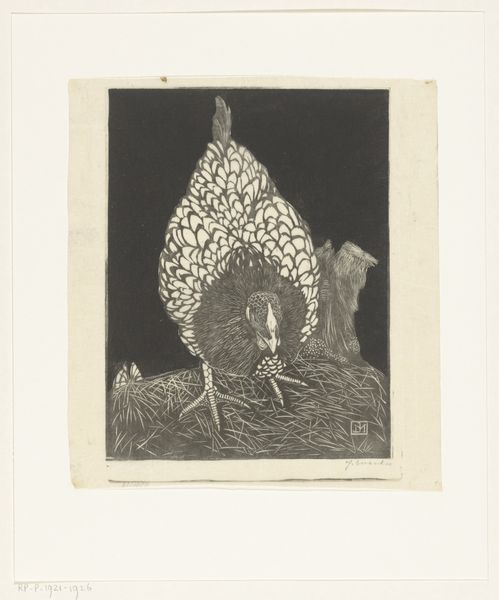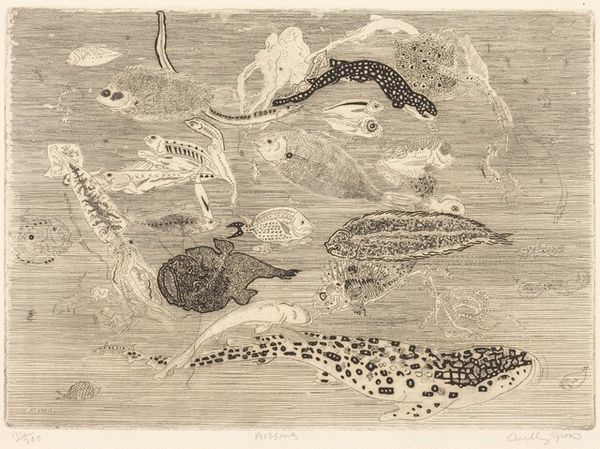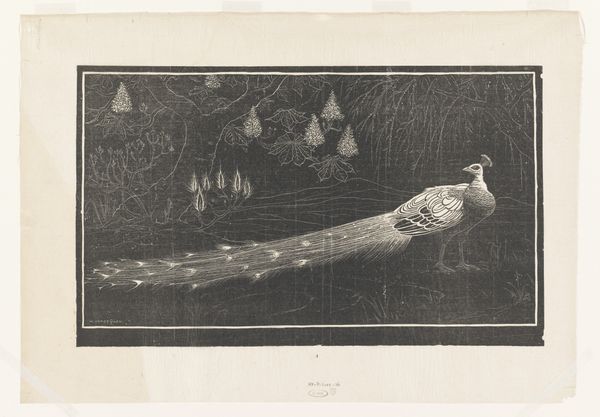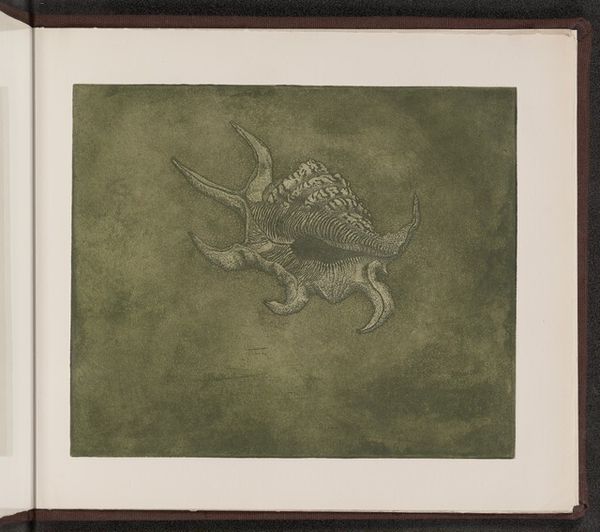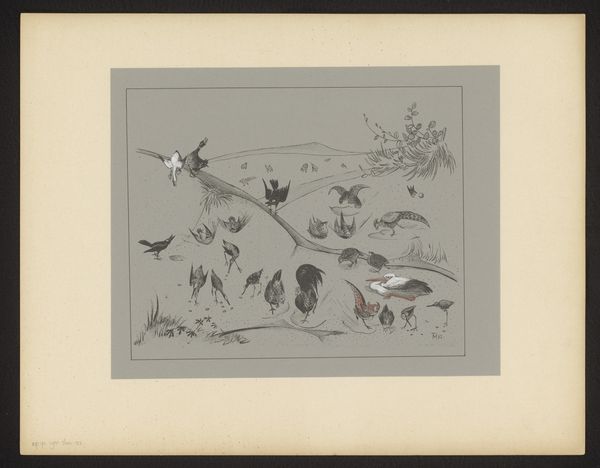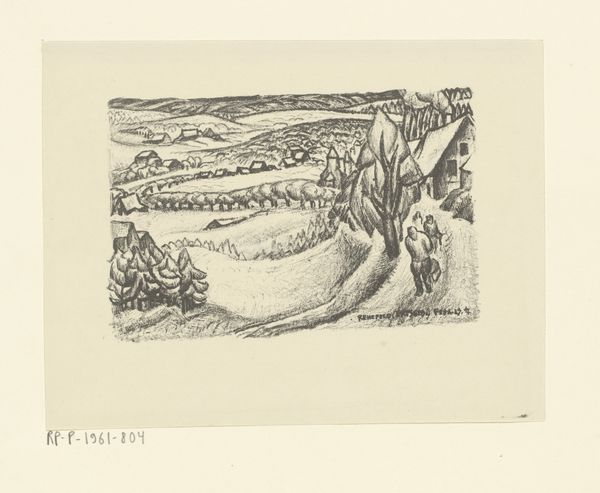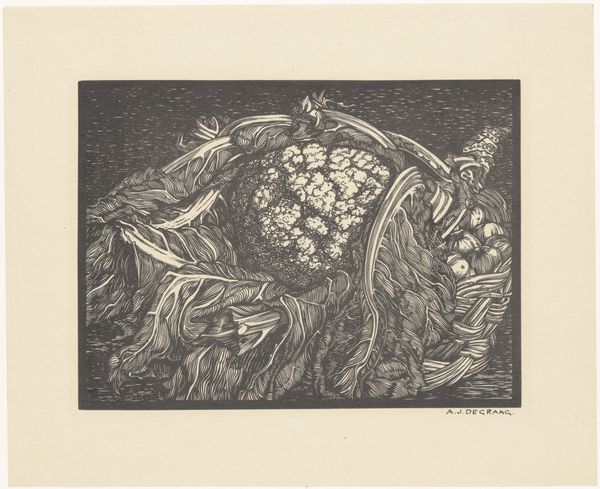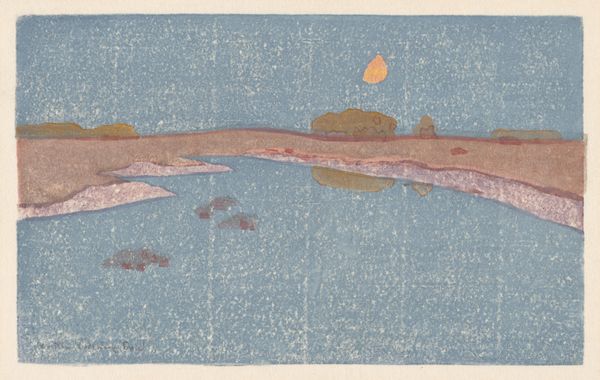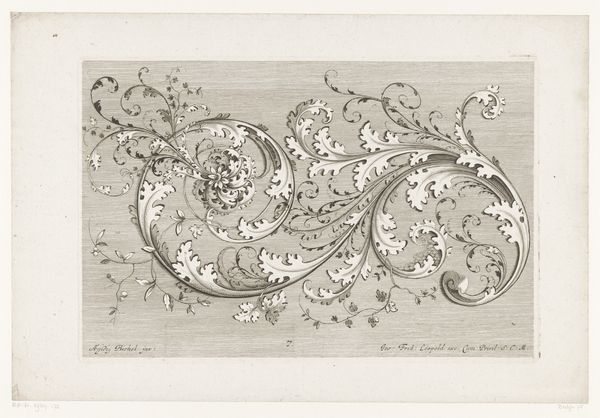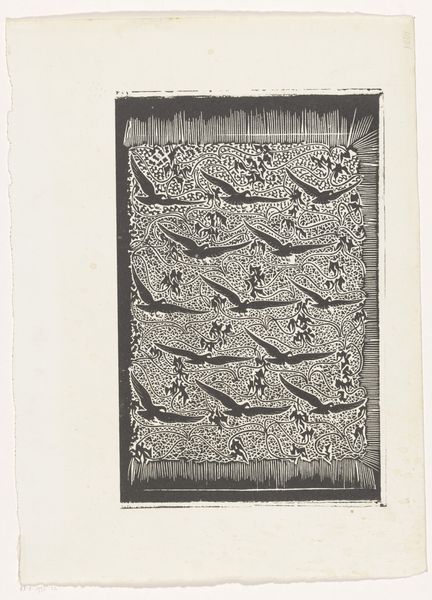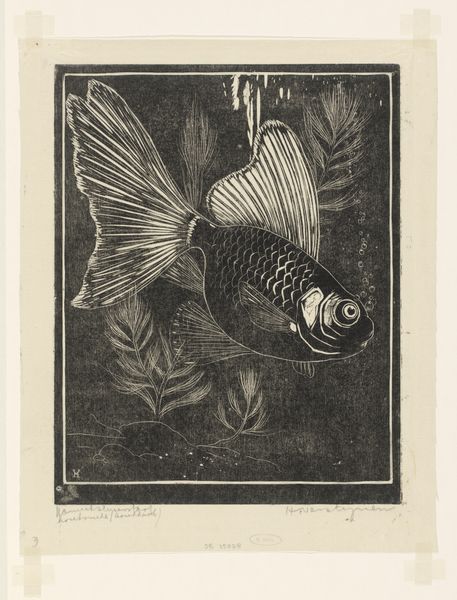
lithograph, print
#
art-nouveau
#
lithograph
# print
#
landscape
#
figuration
#
symbolism
Dimensions: height 301 mm, width 410 mm
Copyright: Rijks Museum: Open Domain
Curator: Editor: This is "Pauw," possibly from 1895, by Theo van Hoytema. It's a lithograph, and the dense composition really strikes me. It’s so visually rich and layered, but almost claustrophobic with how much detail is packed into the image. What social narratives or commentaries might Hoytema have been exploring? Curator: That's an astute observation. The density speaks volumes. Think about the era – the rise of industrialization, the increasing urbanization. Hoytema, associated with symbolism and Art Nouveau, was likely reacting to these shifts. How does the peacock, traditionally a symbol of opulence and vanity, play into this context? Editor: Maybe it's a commentary on the superficiality of wealth or the perceived decadence of the upper classes at the time? Is Hoytema critiquing that kind of excess by embedding this peacock in such an overwhelming pattern? Curator: Exactly! And consider the Art Nouveau movement itself. It often sought to elevate crafts and nature against the backdrop of mass production. The peacock, rendered in a stylized, almost decorative way, could be read as both celebrating natural beauty and critiquing its commodification. What do you make of the colour choices, of limiting himself like this? Editor: I see that the print focuses on stark contrasts – the blacks and whites. It's definitely an aesthetic choice, but also gives this lithograph an air of social commentary. It has a critical perspective, but invites conversation, and doesn't just shut down into cynicism. Curator: Precisely! By examining these visual elements, we can understand how "Pauw" operates as a cultural artefact, engaging with contemporary issues of class, industrialization, and the very definition of art and beauty. Editor: Thank you. I see so much more now when I examine the historical moment and its visual language! Curator: The goal is to never look at a painting in isolation from how it made and received – history is our biggest source!
Comments
No comments
Be the first to comment and join the conversation on the ultimate creative platform.
